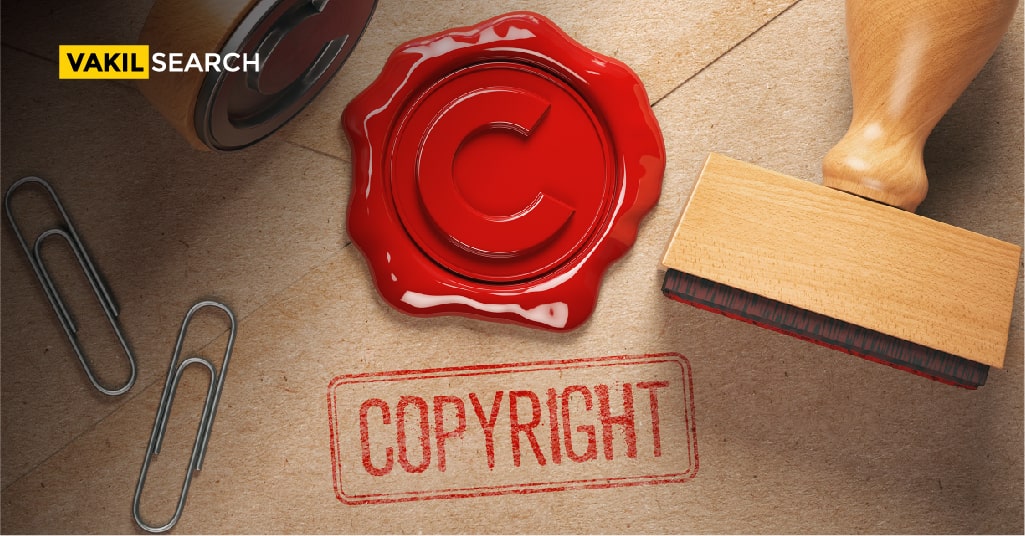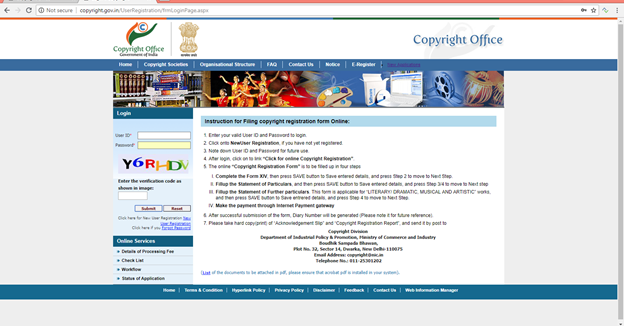Documents submission is a key part of any government registration process. Know how to upload documents the right way for copyright registration by reading this article.
Copyright is an important right that is given to anybody who has created something unique, which may include writers, musicians, directors, painters, and even app developers. These rights govern laws regarding the copying, legitimacy, originality, and reproduction of their work in any form or manner. To secure your rights, you need to upload documents for copyright registration.
It also ensures that their work is not translated, copied, or altered without their knowledge and permission. In short, these laws prevent fraudulent copies and imitations, which might affect the creator of the original work and is an important step taken by the government to avoid any such mishaps. This also helps to safeguard the best interests of creative influencers by protecting their creativity and originality. Here’s a look at everything you need to know about Copyright Registration India.
The Copyright Act
The Copyright Act of 1957 was passed, hoping that this law would help in the prevention of the copying faking of original creative content. This Act protects the following unique creative fields and products:
- Literary works including prose, poems, and taglines (Copyright Act Literary Work)
- Dramatic efforts such as scripts and plays
- Musical works and jingles
- Artistic works like paintings, murals, and sculptures (Copyright for Artistic Work)
- Films and sound recordings (Copyright for Songs in India)
- Fashion designs
- Software
- Manuscripts
The Copyright Office
The Copyright Office is an office that is set up to provide copyright registration to people and functions under the supervision of a Registrar of Copyrights who is appointed by the central government. Applications for registrations may be sent via post or online method. Online registration facilities were started in February 2014 and are now a primary mode of registration. Here are the current location and contact details of the Copyright Office in India.
- Boudhik Sampada Bhawan, Plot No. 32, Sector 14, Dwarka, New Delhi-110078
- Telephone No.: 011-28032496, 08929474194
Procedure for Registration
Here’s a look at the Copyright Registration
- Applications are to be made via Form XIV
- The form must be attached with a Statement of Particulars (SoP) and Statement of Further Particulars
- Each work requires a separate registration
- Each work’s registration must be sent along with the pre-requisite fee attached to it
- The petitioner must duly sign all applications
- In case, the petitioner cannot sign the document, a Power of Attorney signed by the petitioner and verified by a lawyer must be sent along with the application
- Fee for the registration process may be paid via Demand Draft, E-payment, or a Postal Order addressed to the Registrar Of Copyrights Payable At New Delhi
- Each column of the SoP must be explicitly and carefully filled
- Here are the fee details for different works.
E-filing may be done to the copyright office via their website.
How to Upload Documents for Copyright Registration
- Open your preferred browser
- Go to this website

- Once the window opens, go to the Login tab
- Enter your login credentials. Enter submit
- Once you are logged in, go to Upload Discrepancy Reply which you can find on the left side of the screen
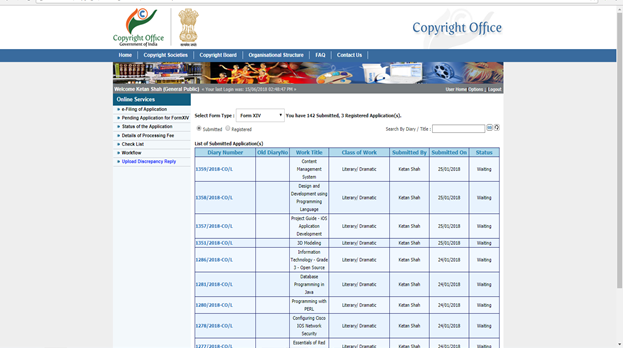
- To view the error document, use the View Discrepancy Letter tab
- Likewise, press on the checkbox to upload a document against a particular acknowledgement number
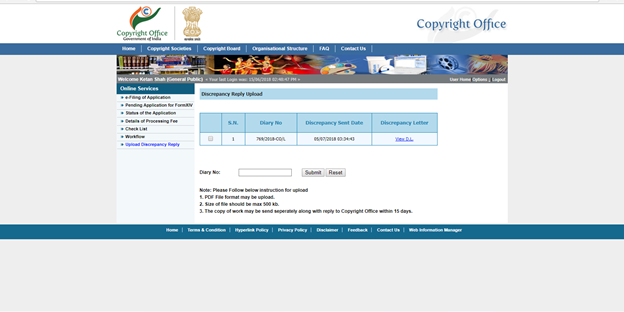
- Once you press on it, a new dialogue box opens up
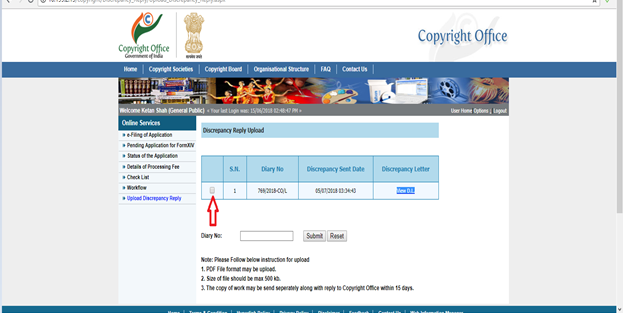
- Click on Upload Document
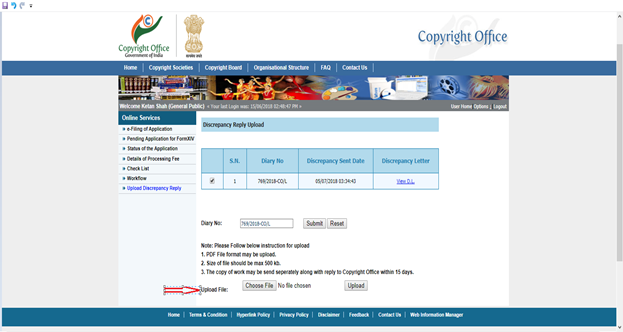
- Select the PDF you need to be uploaded
- Click on that PDF, and press Upload.
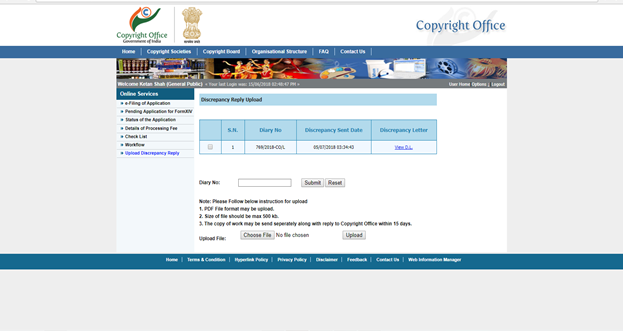
Time Required
After applying, you will receive an authentication number which you can use to track the progress of your copyright application. The mandatory waiting period following this is 30 days. Moreover, if a complaint is filed, the Registrar of Copyrights will hear arguments from both parties and then decide on who is at fault and who is right, following which they will register the work.
In case no objection claim is filed, examiners analyze the application, and if no discrepancies are found, the registration is deemed complete. Further, if any fault is found, they will notify the petitioner following which they have 45 days to rectify the mistake in the application.
Also, Read:
